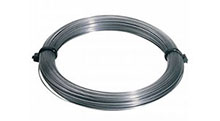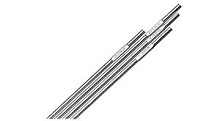Grade 316 is the standard molybdenum-bearing grade, second in significance to 304 among the austenitic stainless steels. The molybdenum gives 316 better total corrosion resistant properties than grade 304, particularly higher resistance to pitting and crevice corrosion in chloride environments. It possesses excellent forming and welding properties.
It is readily roll formed into a range of parts for usage in the architectural, industrial and transportation fields. Grade 316 also has exceptional welding characteristics. Post-weld annealing is not needed when welding thin sections.
Grade 316L, the low carbon version of 316 and is insusceptible to sensitization. Thus, it is expansively utilized in heavy gauge welded components (over about 6mm). Grade 316H, with its higher carbon content has application at elevated temperatures, as does stabilized grade 316Ti.
The austenitic structure also gives these grades outstanding toughness, even down to cryogenic temperatures. Solution Treatment (Annealing) should be done by heating to 1010 °C -1120°C and cool rapidly. These grades cannot be hardened by thermal treatment.
Low speeds and constant feeds will minimize this alloy’s tendency to work harden. Tougher than 304 stainless with a long stringy chip, the use of chip breakers is recommended. All common fusion and resistance methods except oxyacetylene welding have proven successful. Use AWS E/ER 316L filler metal for finest results. All common hot working procedures are possible with this alloy. For optimum corrosion resistance, a post-work annealing is recommended. Shearing, stamping, heading and drawing can be successfully performed. To remove internal stresses, a post-work annealing is recommended. This alloy does not respond to heat treatment. Cold work will effect an increase in both hardness and strength.
Heat Exchangers
Wire Coil
Welding Rod
Wire – Bobbin



